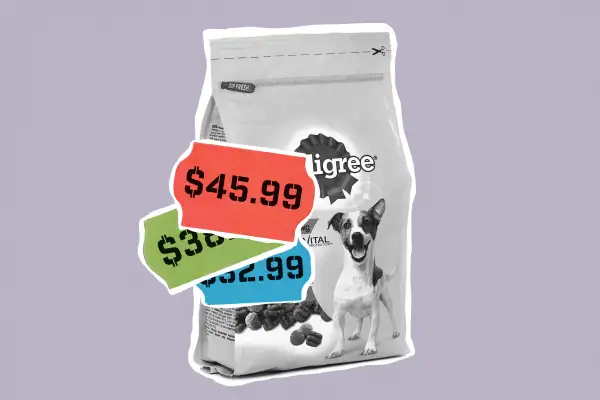From Dresses to Dog Food, Here Are 8 Essentials Inflation Is Making More Expensive

Getting sticker shock at the gas pump or grocery store? There's a reason for that. Newly released data shows that prices for consumer goods are continuing to creep up almost across the board.
Prices in July were 5.4% higher than they were last summer, according to the Consumer Price Index report published Wednesday by the Bureau of Labor Statistics (BLS). That’s higher than the 2% inflation rate the Federal Reserve says is its long-term target, and Americans are feeling it.
Experts predict price inflation will mellow out as supply chains return to normal and the economy recovers from the pandemic recession, so there’s no need to panic yet. In the meantime, though, you may encounter higher-than-usual prices for the following essentials:
Rent
The millions of Americans who are renters will be distressed to hear that rents are going up after a pandemic dip in many cities. Prices are up almost 3% from last year, according to the BLS.
While this is far from the highest level of inflation in the economy right now, it’s not ideal for renters who are already struggling amid changing eviction directives from the federal government. Case in point: A recent report from the National Low Income Housing Coalition found rents are already so expensive that people working full-time, minimum-wage jobs can’t afford a two-bedroom apartment anywhere in the nation.
Cars
Car prices are continuing to rise, but used cars may be a bright spot. Prices for these plateaued in July after seeing a bump so intense that for some popular models — like the Honda Civic and Subaru Crosstrek — used vehicles were more expensive than new ones. Economists are celebrating the news, which some interpret as a sign that inflation is headed back down to a more normal rate.
Gas
The current national average for gas is $3.18 per gallon, according to AAA. Prices are rebounding from a pandemic low of less than $2 per gallon last spring as more travelers fill up and hit the road. Folks in Hawaii are seeing prices around $4.10 at the pump, and in California people pay a whopping $4.39 on average.
Cookies — and pork roast
You’ve surely noticed the prices of some of your favorite groceries skyrocket this year, and this past month was no exception. Bakery products were up — cookie prices increased 1.9% from June to July, and bread, crackers and the like were up 3.7%. Pork roasts, ribs and steaks? Up 4.4% from a month earlier, while prices for “frankfurters” (aka hotdogs) increased even more.
Meanwhile, restaurant meal prices went up faster than they have in decades. “The food away from home index rose 0.8 percent in July, its largest monthly increase since February 1981,” the BLS said in Wednesday’s release.
Pets and their accessories
The pandemic created 23 million new pet owners, by the American Society for the Prevention of Cruelty to Animals’ estimate, and now it’s getting pricier to purchase your kitty’s litter and treats. Retailers like Amazon, PetSmart and Target are reporting shortages of some pet food brands amid high demand and competition for ingredients. It may be time to stock up on your animal’s favorite items.
Indoor plants
Didn’t adopt a furry friend during the pandemic? You may have become a plant parent. Increased demand brings higher prices for greenery, too. If you’re still looking to stock up on plants, you’ll pay around 3.8% more for an indoor plant today than you would have a year ago, according to the BLS.
Dresses (and apparel in general)
You’ll pay prices that are nearly 20% higher than last year if you’re purchasing a dress anytime soon, according to the BLS. Supply chain issues have caused clothes to become overall more expensive. During the early months of the pandemic clothing sales dropped by a shocking 79%; clothing factories shut down due to decreased demand and local lockdowns.
Now, all the pent-up demand for clothes is bumping up against still-closed factories, shipping delays and a retail worker shortage as employees jump ship searching for better-paying gigs.
More from Money:
Why Debt-Ridden Millennials Should Be Cheering for Inflation
Investors Who Bought Gold to Beat 2021's Inflation Surge Are Still Waiting to Cash In
